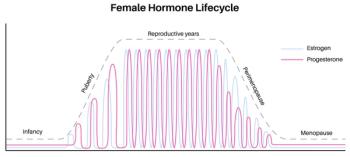
Blood Test Used to Detect Alzheimer Disease May Improve Diagnosis Among Primary Care Clinicians and Specialists
A blood test had a diagnostic accuracy of 91% compared with 61% accuracy by primary care clinicians and 73% by dementia specialists, according to new research.
A blood test performed better than a standard evaluation by primary care physicians or dementia specialists in detecting
The PrecivityAD2 blood test algorithm demonstrated a diagnostic accuracy of 91% in detecting AD among a cohort of 1213 participants with cognitive symptoms, compared with 61% diagnostic accuracy after standard clinical evaluations by primary care physicians, and 73% accuracy by dementia specialists.1
Also, the blood test performed accurately despite a relatively high rate of comorbidities among participants, including kidney disease, researchers reported in the study which was simultaneously published online July 28, 2024, in the Journal of the American Medical Association.1
The blood test incorporated the ratio of plasma phosphorylated tau 217 (p-tau217) relative to non-p-tau217 (expressed as %p-tau217 in the study), combined with the amyloid-β 42 and amyloid-β 40 (Aβ42:Aβ40) plasma ratio (referred to as the amyloid probability score 2 [APS2]), based on mass spectrometry assays. Investigators compared the blood tests’ accuracy with physician diagnoses based on standard evaluations that included clinical exams, cognitive tests, and a CT scan.1
“Notably, these were the results of blood samples that have been shipped bi-weekly for analysis from primary care units, which is similar to routine clinical practice,” lead author Sebastian Palmqvist, MD, PhD, of Lund University in Sweden, said in a press release. "These results were especially impressive considering that older populations in primary care often have medical conditions that can influence or vary the concentrations of p-tau217.”2
According to Palmqvist and colleagues,
“Although assessments using these blood biomarkers are promising, several knowledge gaps hinder their clinical implementation,” investigators wrote. “The biomarkers must be validated in primary care and compared with standard clinical assessments in terms of diagnostic accuracy. The biomarkers must also be accurate when using predefined cutoff values and continuous analysis of samples (similar to clinical practice).”1
Researchers conducted the current study in order to examine the diagnostic accuracy of the AD blood test when applied with predefined cutoff values in both primary and secondary care settings. The cohort consisted of participants in the Swedish BioFINDER and BioFINDER2 trials who had clinical evaluations due to cognitive symptoms from February 2020 through January 2024. The mean age was 74.2 years, and 48% of participants were women, 23% had subjective cognitive decline, 44% had mild cognitive impairment, and 33% had dementia. In both the primary and secondary care assessments, 50% of patients had AD pathology.1
One plasma sample from each patient was analyzed as part of a single batch for each cohort. The blood test also was evaluated prospectively in each cohort, with one plasma sample per patient sent for analysis within 2 weeks of collection, according to the study.1
The primary outcome was AD pathology—determined by abnormal cerebrospinal fluid Aβ42:Aβ40 plasma ratio and p-tau217—and the secondary outcome was clinical AD. Researchers calculated predictive value (PPV), negative predictive value (NPV), diagnostic accuracy, and area under the curve (AUC) values.1
Results
When researchers analyzed plasma samples in a single batch in the primary care cohort, the blood test showed an AUC of 0.97 (95% CI 0.95-0.99), PPV of 91% (95% CI 87%-96%), and NPV of 92% (95% CI 87%-96%). In the secondary care cohort, when the blood test was used, AUC was 0.96 (95% CI 0.94-0.98), PPV was 88% (95% CI 83%-93%), and NPV was 87% (95% CI 82%-93%).1
When the plasma samples were examined prospectively (biweekly) in the primary care cohort, the blood test had an AUC of 0.96 (95% CI 0.94-0.98), PPV of 88% (95% CI 81%-94%), and NPV of 90% (95% CI 84%-96%); in the secondary care cohort, the AUC was 0.97 (95% CI 0.95-0.98), the PPV was 91% (95% CI 87%-95%), and the NPV was 91% (95% CI 87%-95%).1
Investigators also reported that the blood test showed high accuracy using predefined cutoff values, ranging from 88% to 92% across all 4 cohorts. In the overall population, the diagnostic accuracy of the blood test (90%, 95% CI 88%-92%) was the same as the diagnostic accuracy using the %p-tau217 alone (90%, 95% CI 88%-91%).1
“We see this as a major step towards global clinical implementation of an Alzheimer’s blood test,” senior author Oskar Hansson, MD, PhD, also of Lund University, said in the press release. “It highlights the need for Alzheimer’s biomarkers in making a correct diagnosis more of the time. The next steps include establishing clear guidelines for how an Alzheimer’s blood test can be used in clinical practice, preferably by implementing these tests first in specialist care and then in primary care. This work is currently ongoing.”2
References:
- Palmqvist S, Tideman P, Mattsson-Carlgren N, et al. Blood biomarkers to detect Alzheimer disease in primary care and secondary care. JAMA. Published online July 28, 2024. doi:10.1001/jama.2024.13855
- Alzheimer’s disease blood tests could improve diagnosis in primary care, speed recruiting for research and reduce wait times. News release. Alzheimer's Association. July 28, 2024. Accessed July 29, 2024.
https://aaic.alz.org/releases-2024/blood-tests-alzheimers-biomarkers.asp
Newsletter
Enhance your clinical practice with the Patient Care newsletter, offering the latest evidence-based guidelines, diagnostic insights, and treatment strategies for primary care physicians.

























































































































































































































































































